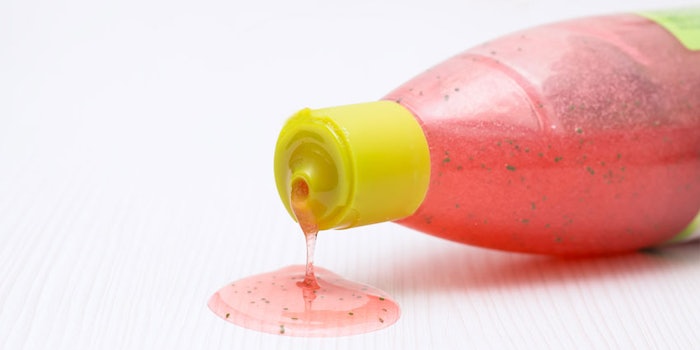
The European Chemicals Agency's (ECHA's) Committee for Socio-economic Analysis (SEAC) has adopted a landmark restriction proposal that would ban microplastics in products such as cosmetics.
This follows an opinion proposing the same, jointly released on June 11, 2020, by both the ECHA's Committee for Risk Assessment (RAC) and the SEAC. The proposal aims to ban products from the European market that contain intentionally added microplastics if they are released into the environment when the products are used.
Definitions for what are considered microplastics, microbeads, particles, etc., are outined in the joint opinion. For example, microplastics refers to particles containing solid polymer, to which additives or other substances may have been added, and where ≥ 1% w/w of particles have (i) all dimensions 0.1 µm ≤ x ≤ 5 mm; or (ii) a length of 0.3 µm ≤ x ≤ 15 mm and length to diameter ratio of > 3. Notably, natural polymers or those that are biodegradable within given parameters do not fall within the definition for microplastics. Additional restrictions apply.
See related: Replacing Microplastics, Natural Cellulose Offers Gentle and Biodegradable Exfoliation
Both committees concluded an EU-wide restriction under the EU’s REACH chemicals legislation is the most appropriate means to address microplastics in the environment. Cosmetics, cleaning and laundry products, fertilizers, artificial turf, and plant protection products and seed coatings were identified as products of concern. Other products, such as paints and inks, may also contain microplastics, but their use does not often lead to environmental release. As such, their use would be monitored by ECHA to ensure residual releases could be controlled. Suppliers would also be obligated to give instructions on how residual releases can be minimized.
'We need to protect our environment from microplastic pollution, and this restriction proposal is the most comprehensive of its kind in the world.'
The restriction will reportedly prevent 500,000 tonnes of microplastics from ending up in the environment over the course of 20 years. Over the same period, the total cost of the restriction to European society is estimated to be at €10.8 or €19.1 billion, depending how environmental risks from the granular infill material (mainly from shredded car tires) are addressed. These cost estimates include reformulating mixtures, replacing microplastics with alternative materials and authorities enforcing the restriction. The full SEAC opinion will be made available on the ECHA website in early 2021.
Bjorn Hansen, ECHA’s executive director said, “We need to protect our environment from microplastic pollution, and this restriction proposal is the most comprehensive of its kind in the world. We have now concluded our scientific and technical assessment and given our recommendations on how to best address the risks. This will contribute to decision-making in the European Commission and the aims of the EU’s Plastics Strategy.”
Following the adoption of SEAC’s opinion, the ECHA will send the opinions of both committees and its restriction proposal to the European Commission. Restrictions under the REACH regulation are proposed by the European Commission, voted on by the EU Member States in the REACH committee, and scrutinized by the Council and the European Parliament.
See related: Microbeads Then and Now, Polyethylene and Alternative Next-gen Abrasives









